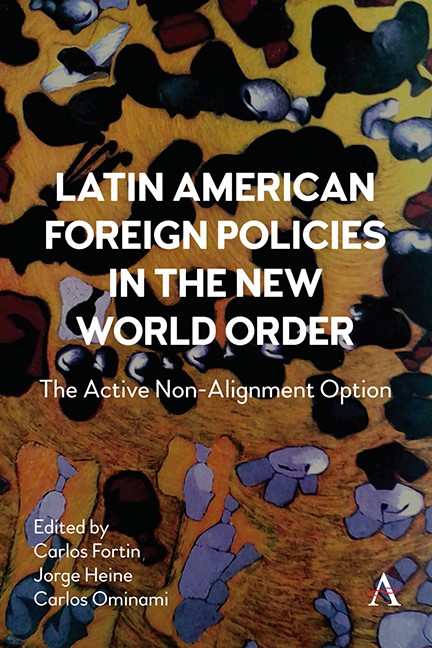Book contents
- Frontmatter
- Dedication
- Contents
- List of Tables and Figures
- Foreword
- Introduction: Active Non-Alignment (ANA) A Doctrine
- Part One The Emerging World Order
- Part Two Active Non-Alignment In The New Geopolitical Environment
- Part Three Active Non-Alignment in the New International Political Economy
- Part Four National Perspectives
- Conclusions—Implications of an Active Non-Alignment (ANA)
- Notes on Contributors
- Index
Chapter Sixteen - Chile’s Route to Non-Alignment, 1945–1973
Published online by Cambridge University Press: 15 November 2023
- Frontmatter
- Dedication
- Contents
- List of Tables and Figures
- Foreword
- Introduction: Active Non-Alignment (ANA) A Doctrine
- Part One The Emerging World Order
- Part Two Active Non-Alignment In The New Geopolitical Environment
- Part Three Active Non-Alignment in the New International Political Economy
- Part Four National Perspectives
- Conclusions—Implications of an Active Non-Alignment (ANA)
- Notes on Contributors
- Index
Summary
The IV Conference of the Non-Aligned Movement (NAM) ended in Algiers on Sunday, September 9, 1973. Scheduled to conclude a day earlier, it had to be extended so that the numerous heads of state and government and foreign affairs ministers in attendance could deliver their speeches. A total of 75 of the 135 member states represented at the United Nations (UN) were present at the highest level, including the pioneers of Bandung, the founders of the Group in Belgrade, and the rulers of most of the recently decolonized countries. There was a significant presence from the Arab world and from Asia and Africa and two Latin American countries—Chile and Peru—joined Cuba, a NAM founding member. Several of the newly independent Caribbean countries like Guyana and Jamaica were also participating in their first summit.
The NAM had gone from being just a small group of countries that rejected the Cold War and bloc politics to embodying the most representative entity of the so-called Third World—also associated with the great issues of the fight against colonialism, neocolonialism, racism, and apartheid. With a close link with the Group of 77 (G77)—created at the first United Nations Conference on Trade and Development (UNCTAD) in 1964—the NAM would also acquire an economic dimension that would be enshrined for the first time in the Final Declaration of Algiers.
There was, however, an important absence: the announced participation of the president of Chile Salvador Allende, a milestone that would mark a much more determined presence of Latin America in the NAM, was canceled shortly before the beginning of the summit. Chile had, however, an important presence, with a large delegation headed by Foreign Minister Clodomiro Almeyda. The coup d’état that caused the death of President Allende and the end of democracy in Chile occurred just two days after the end of the Algiers Summit. Chile had joined the NAM in September 1971, and two years later that participation was terminated. The movement—which had issued a declaration in support of the Allende government at the summit—would later reject the attempts of the Pinochet dictatorship to join it.
- Type
- Chapter
- Information
- Latin American Foreign Policies in the New World OrderThe Active Non-Alignment Option, pp. 217 - 230Publisher: Anthem PressPrint publication year: 2023

